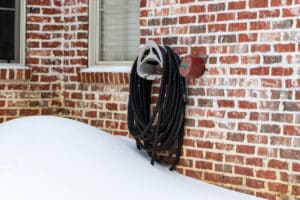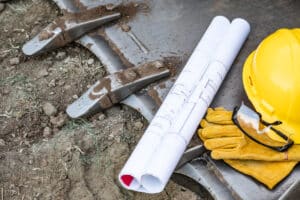A firm foundation is essential to building a home that will last. But, even homes built with the strongest foundation can have cracks to form in walls and on the foundation. Many cracks can be attributed to the foundation settling and are typically not a cause for concern. However, if you begin to notice cracks growing larger or they start to allow water to seep through, it is time to have them repaired before the damage becomes worse.
There are two different types of cracks that you may see forming in your basement. In this blog we discuss how to recognize the different types of cracks, what they may be telling you about the integrity of your foundation and ways to fix them.
1. DIAGONAL OR VERTICAL CRACKS
Typically, diagonal or vertical cracks indicate the settling of your concrete foundation and is quite common in new construction. Since concrete shrinks while it cures, the home settles and cracks can occur. Often these are referred to as “shrinkage cracks”.
Some vertical cracks are not from shrinkage, you can identify these if the crack is located closer to a corner and is wider than 1/8 inch, which can indicate a more serious foundation issue.
The Fix:
Vertical cracks that are clearly not caused by shrinkage, can be repairs by using a carbon fiber wall crack repair process to seal and strengthen the areas where your wall has cracked. We place a carbon fiber strip directly over the crack and apply a patented epoxy sealant to the area. The dry carbon fiber both acts as a support for anything that will make the crack larger and stops water from entering your basement.
2. HORIZONTAL CRACKS
Horizontal cracks often indicate a more serious problem. Typically, horizontal cracks are caused by water pressure from outside and can lead to a failure in the foundation. A well laid foundation is designed to handle the pressure of water and soil, but additional pressure from heavy rain or flooding can create serious horizontal cracks that need to be repaired as soon as possible.
The Fix:
A solution you may want to consider is a Crack Injection. Crack Injection is a two-part process using epoxy on the exterior and high-density foam on the interior to pack a one-two punch on the crack in the wall to seal cracks and keeps water out.
Another solution to consider is Epoxy crack injection. This is an economical method of repairing non-moving cracks in concrete walls, slabs, columns, and piers and is capable of restoring the concrete to its pre-cracked strength.
If the soil around your home is not properly graded and drained, water will eventually saturate the ground around the foundation walls and increase water pressure which may exceed the weight-bearing capacity of the walls and cause them to crack or bow. You may want to have the soil levels around your home to prevent future cracks in your foundation.
Schedule Foundation Crack Repair Services Today
Each repair appointment begins with an inspection to assess the extent and the origin of the damage. Our team provides homeowners with fast and effective crack repair services right away. With years of experience and training, our team specializes in diagnosing and identifying wall cracks and can help you keep peace of mind when you are in need of repairs.
Contact Missouri Foundation and Foam today at 573-567-0757 or use the contact form on our website to begin the foundation crack repair.





